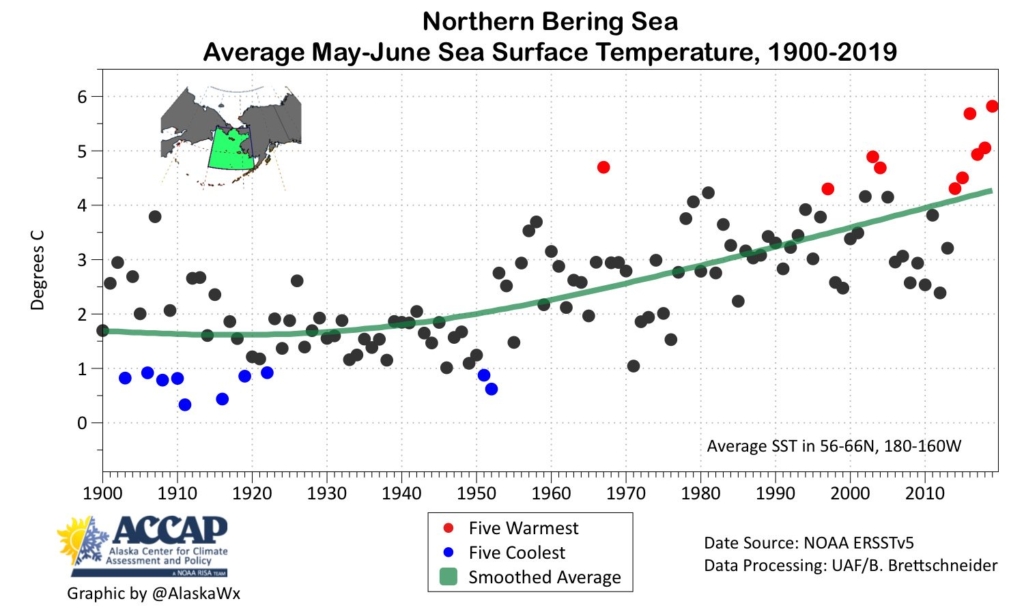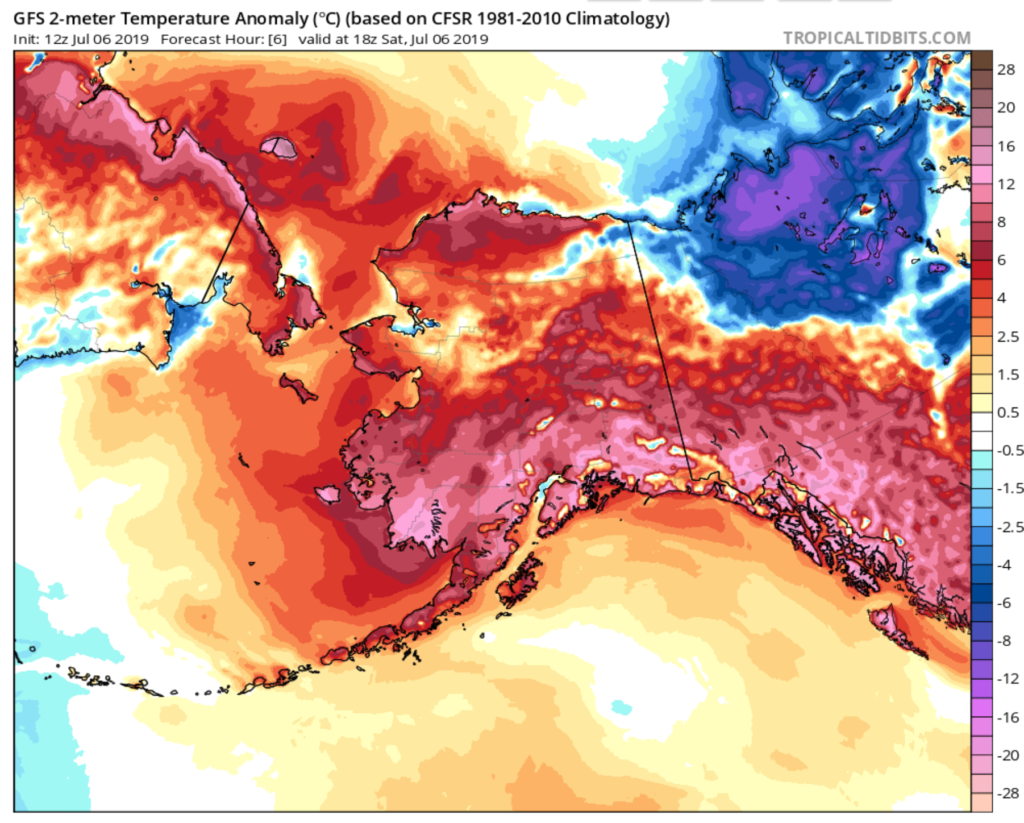Anchorage, Alaska roasts in 90°F heat, smashing all-time record by 5°F
By Dr. Jeff Masters
5 July 2019
(Weather Underground) – The temperature in Alaska’s largest city of Anchorage soared to an astonishing 90°F on Thursday, July 4, smashing the city’s previous all-time heat record by a remarkable 5°F. Anchorage’s average high temperature for July 4 is 65°F; records for Anchorage date back to 1952. All-time heat records fell Thursday at all four Anchorage climate stations, and were set or tied at three other Alaska locations with a long period of record:
- Anchorage Ted Stevens Airport: 90°F (previous record: 85°F, 14 June 1969)
- Anchorage Merrill Field: 90°F (previous record: 87°F on 27 June 1953)
- Anchorage Elmendorf Air Force Base: 87°F
- Anchorage Lake Hood: 89°F
- Kenai: 89°F (previous record: 87°F on 26 June 1953 and 18 June 1903)
- King Salmon: 89°F (previous record: 88°F on 27 June 1953)
- Palmer: 88°F (tied with 88°F on 27 June 1953 and 27 May 2011)
The hottest location I found in Alaska on Thursday was 94°F at Skilak Guard Station. This fell short of Alaska’s all-time highest reliably measured temperature of 98° measured at Richardson on 15 June 1969 (see the 2013 post by wunderground’s weather historian, Christopher C. Burt). According to Mr. Burt, the official heat record for Alaska remains the 100° registered at Fort Yukon on 27 June 1915. However, there are questions concerning this figure as outlined by Alaskan weather expert Rick Thoman in his presentation Forensic Climatology in Alaska. He surmised that hot air had become trapped in the valley, and that the 100° reading at Fort Yukon was ‘plausible’, but not certain. In the same report, he categorically dismissed the 99° record for Fairbanks supposedly set on 28 July 1919. […]
Record warmth causing near-record sea ice loss
Alaska had its warmest March on record this year, followed by its 10th warmest April and 6th warmest May. June was the warmest and driest June on record in Anchorage, according to the National Weather Service, and Kotzebue, Talkeetna, and Yakutat also had their record warmest June, according to Rick Thoman, an Alaska-based climatologist. The first six months of 2019 have been the warmest first half of any year on record in America’s northernmost town on the Arctic coast, Utqiagvik (formerly known as Barrow), according to the Southeast Regional Climate Center.

All of this unusual warmth has led to significant losses of sea ice extent near Alaska, helping drive Arctic sea ice coverage to the second lowest June extent on record, said the National Snow and Ice Data Center. Water temperatures in the Bering and Chukchi Seas were running at least 4.5 degrees warmer than average, said Thoman, and sea ice extent in June in the Chukchi Sea off the northwest coast of Alaska was the lowest on record. [more]
Anchorage, Alaska Roasts in 90° Heat, Smashing All-Time Record By 5°



